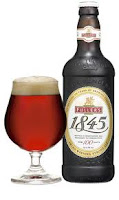 Our local CAMRA branch covers a wide area of West Kent, taking in not only the major towns of Sevenoaks, Tonbridge and Tunbridge Wells, but also smaller ones such as Edenbridge and Westerham. There
is a considerable amount of countryside in between, interspersed with
picturesque rural villages and, as might be expected, some attractive
country pubs. Covering this rural chunk of the county can be a bit of a
logistical nightmare, but during recent years the branch has adopted a
policy of holding socials in the easy to reach towns on weekday
evenings, and then at the weekend, (usually during daylight hours),
getting out to some of the much less accessible villages.
Our local CAMRA branch covers a wide area of West Kent, taking in not only the major towns of Sevenoaks, Tonbridge and Tunbridge Wells, but also smaller ones such as Edenbridge and Westerham. There
is a considerable amount of countryside in between, interspersed with
picturesque rural villages and, as might be expected, some attractive
country pubs. Covering this rural chunk of the county can be a bit of a
logistical nightmare, but during recent years the branch has adopted a
policy of holding socials in the easy to reach towns on weekday
evenings, and then at the weekend, (usually during daylight hours),
getting out to some of the much less accessible villages.Despite its largely rural makeup and in spite of cutbacks to local government subsidies, West Kent does still have a half decent public transport network. It may be fragmented, with a host of different bus companies (both large and small) covering the different routes, but with a bit of forward planning and a bit of additional effort, it is possible to reach most parts of the area and, more importantly, the majority of its pubs without resorting to the private motor car.
It always amazes me just how lacking in knowledge the majority of the largely car-owning general public are when it comes to using public transport. It seems people have become so used to the convenience, and comfort, of jumping into their vehicles and driving off to wherever it is they want to go. For beer lovers and pub goers alike this simply isn't an option, not unless one wishes to severely curtail ones consumption or just plain stay off the beer altogether. None of us seriously want to follow that option though, which is why as a branch, we have always made as much use as we can of public transport. Our award winning "Gateway to Kent " guide not only includes public transport information for all the rural pubs (providing it is available), but also includes a section at the rear of the guide about getting to the pub, either by train, bus or a combination of the two. For the more energetic there are articles on both walking and cycling, with suggested "refreshment stops" along the way!
In three weeks time we've a Saturday outing, by bus, to a couple of remotely situated pubs we don't normally get out to. I wrote about one of them, the Kentish Horse at Markbeech, here, but we'll also be visiting the isolated Greyhound a Hever, before catching the bus on to Edenbridge where the Good Beer Guide-listed Old Eden, awaits us. Between Christmas and New Year, whilst looking for some possible pubs to visit with a group of friends, I came up with several possibilities, all involving bus journeys, to different points of the compass. The pubs it was possible to visit by these bus routes, include the Crown at Groombridge and the Dorset Arms, Withyham Bus 291); the Spotted Dog and Bottle House, Smart's Hill, plus the Chafford Arms, Fordcombe (Bus 231); and the Fountain, Cowden (234). Last year we also visited a number of pubs to the north of the branch area, such as the Golding Hop at Plaxtol and the National Inventory-listed Old House at Ightham Common (Bus 222).
Don, who is acting Social Secretary for the branch, and a mine of information about bus travel and the various ticketing options, made a point in his report to our 2012 Branch AGM that many members, as well as the general public, are unaware that public transport IS available to most of our more remote pubs, and spoke of the need to emphasise these options more, together with likely costs, in our publicity for such outings. This lack of knowledge has been brought home to me on a number of occasions by comments posted on this blog. Some people appear incredulous that it is possible to visit most of the rural gems I write about, using either buses or train. One correspondent wasn't even aware that there is a regular train service between Tonbridge and Frant (the Hastings Line), which enables evening visits to the Brecknock Arms, our nearest Harvey's pub.
It is important not only to support our rural pubs by visiting them as often as possible, but also equally important to travel to them using public transport wherever possible. Many of these bus routes operate at a loss, and most are very under-used. There have been occasions when were it not for us CAMRA members, the bus would have been running empty. I mentioned near the beginning of the article about the importance of subsidies from the local authority, in our case Kent County Council. Most of these rural bus routes rely on subsidies to keep going, At a time when the reins on spending are continually being tightened, the old adage of "use it or lose it! is more appropriate than ever. It would be a tragedy if, through a mixture of apathy and ignorance, we were to lose these rural links. It would certainly make going to the pub a whole lot harder!

























